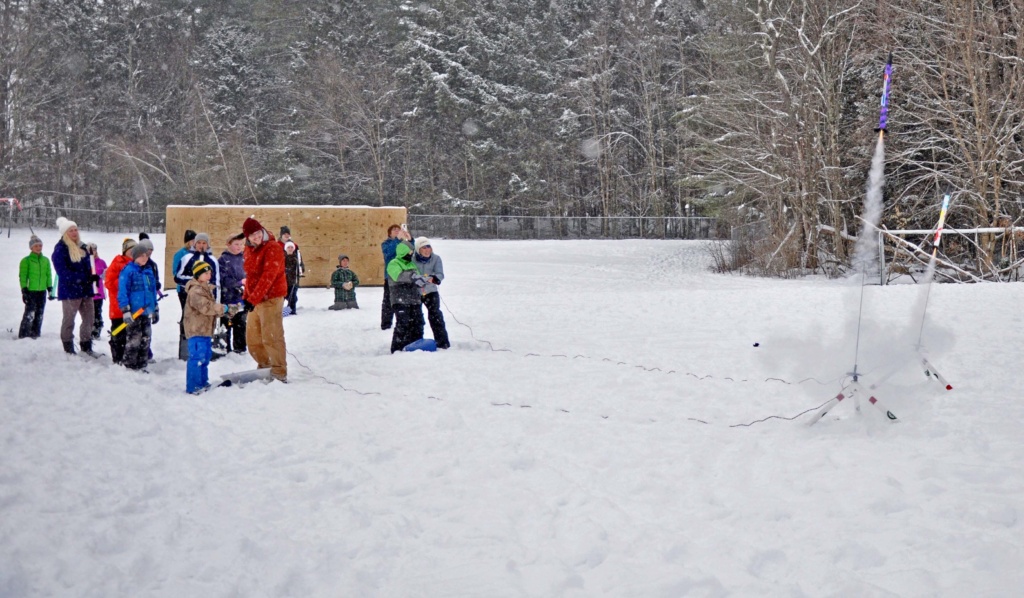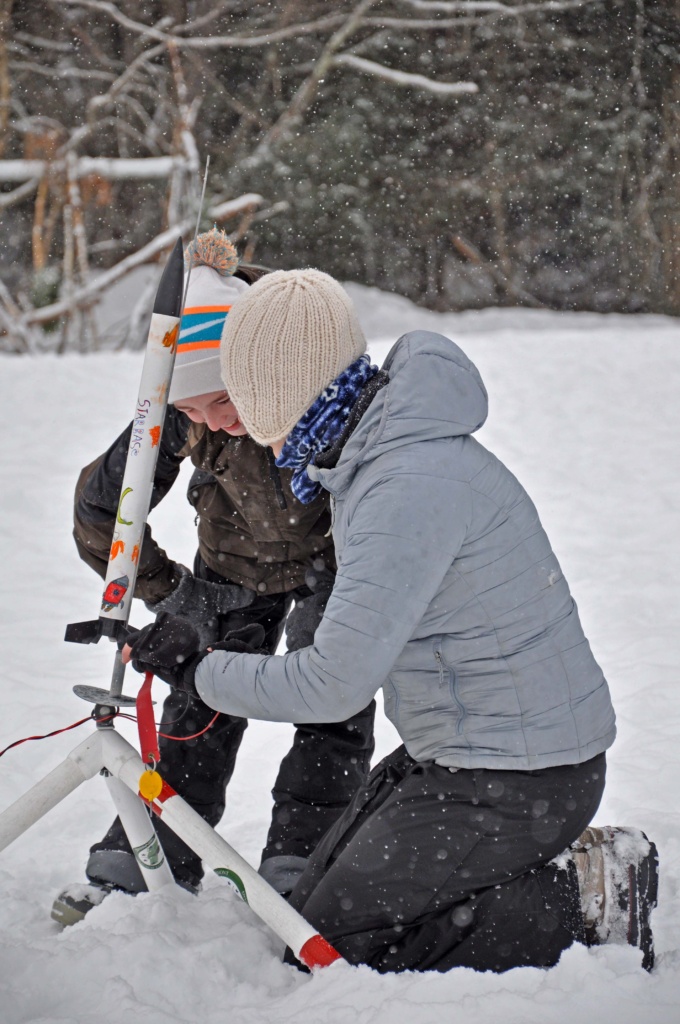FLETCHER STUDENTS BROADEN LEARNING IN STEM FIELDS

By Chris Dodge
Rigorous learning and having a “blast” can go hand-in-hand, as Fletcher Elementary School fifth graders found out recently. Brightly colored model rockets soared into the sky from the school playground last Friday, leaving a trail of smoke and newfound knowledge for the school’s fifth graders.
The young scientists participated in a five-day, 25-hour learning experience at Starbase, an educational affiliate of the U.S. Department of Defense, located on the Vermont Air National Guard Base in Burlington. The program focuses on teaching students about physics, chemistry, technology, engineering, and math, along with possible careers in those fields.
“It’s all hands-on,” fifth-grader Eric Wimble said. “We learned everything by doing experiments and projects and that will help me remember better than just reading a book.”
Starbase lessons include everything from exploring an actual F16 fighter jet in the hanger to flying a variety of planes using high-tech flight simulators. Other lessons focused on learning about gravity through cooperative games and learning about air pressure by experimenting on marshmallows.

“Everything we did was related to an actual real-life problem or idea,” fifth grader Chase Murray said. “It just made sense.”
In addition to academic concepts, the Starbase program aims to foster collaboration and healthy decision-making by students, as well as building community and exposing students to cutting-edge technology. Each “Starbase,” as they have come to be called, selects a “call sign” for themselves, just as pilots on the base would do. Students and staff are referred to by their call signs, which reflect one of more personal interests or attributes, throughout the Starbase experience.
(article continues below ad)
[bar group=”86,87,88″]
Starbase opened its doors in 1994 and has more than 1,300 student participants annually. There are both Burlington and Rutland, Vermont, campuses.
During the program’s s physics component, students study Newton’s Laws of Motion by conducting a hands-on experiment that includes building and launching model rockets. Many parents and much of the rest of the school turned out to watch the Fletcher fifth graders launch their rockets last week. Other Starbase topics include fuel mechanics and aerodynamics, much of which is learned through experiments and observations of military planes that enter and exit the base on which Starbase is housed.
“Starbase is a combination of rigorous and fun academics, career exploration, and the teaching and building of community and social skills,” fifth-grade teacher Cassandra Underwood said. “It’s the whole package, and it takes place in an exciting and engaging atmosphere.”
Building blocks of matter, physical and chemical changes and atmospheric properties are all emphasized in Starbase’s chemistry strand. Additionally, technology innovations including the latest in mapping, nanotechnology, robotics and chromatography (a method for separating organic and inorganic compounds to determine their make-up) are featured.
“It just makes you want to learn more and more,” Murray said. “It’s so much fun that you can’t get enough.”
[bar group=”86,87,88″]




